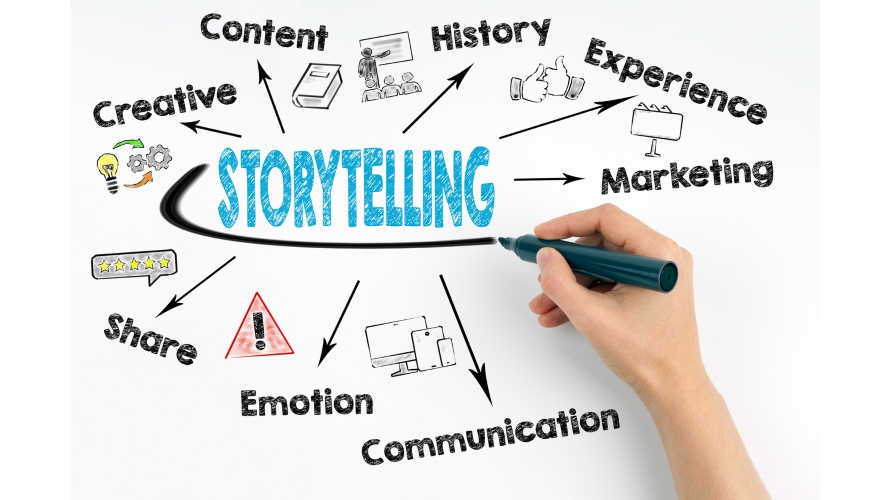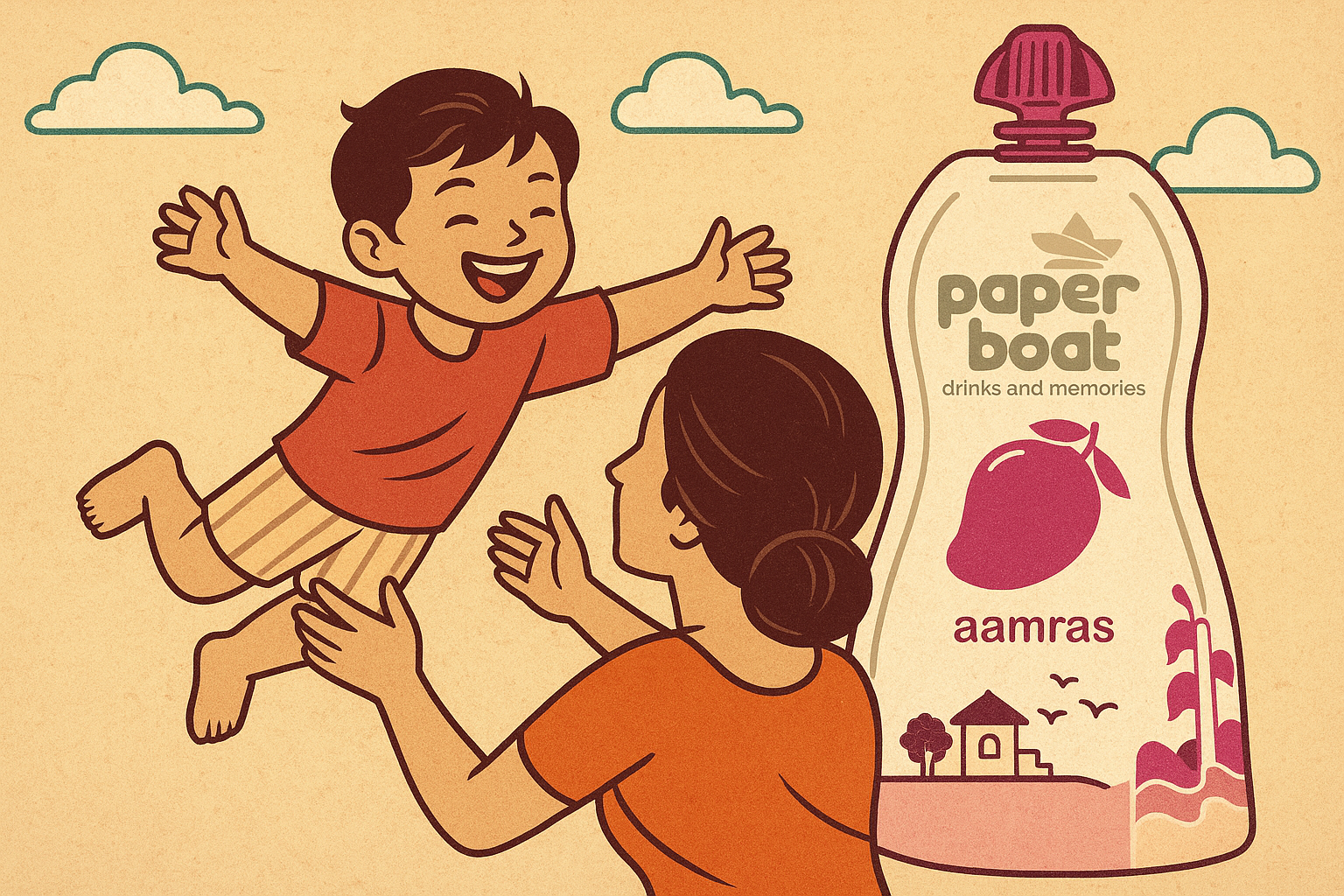Table of Contents
Introduction: Why Stories Sell
What’s the difference between a brand that sticks in your memory and one you forget the moment you scroll past? More often than not, it’s the story behind the brand. Think of brands like Paper Boat, Fevicol, or Nike — they don’t just sell products; they sell experiences, nostalgia, struggles, and triumphs. This magic is called brand storytelling, and it’s one of the most powerful tools in modern marketing. In this blog, we’ll explore what brand storytelling means, why it works so effectively, and how you can use it to make your brand relatable and unforgettable.
What is Brand Storytelling?
Brand storytelling is the art of using a narrative to connect your brand with your customers on a deeper, more emotional level. It goes beyond slogans and product features. Instead, it speaks to values, beliefs, and shared experiences. At its core, brand storytelling is about building trust and familiarity — it helps humanize your brand.
When done right, brand storytelling transforms a business from just another seller into a trusted friend or even a cultural icon. This isn’t about fiction — it’s about revealing truths in compelling ways.
Why Storytelling Works in Branding
Stories have been part of human culture for thousands of years. Psychologically, they help people remember facts more easily, feel emotions more deeply, and relate to complex ideas in simpler terms. According to a Harvard Business Review article, stories are more persuasive and memorable because they engage more areas of the brain than plain facts.
From a branding perspective, stories:
– Make your brand more relatable and human.
– Help you stand out in a crowded market.
– Create emotional engagement, which drives loyalty.
– Encourage word-of-mouth marketing, as stories are more shareable.
Think about it — people don’t remember technical specs, but they’ll always remember a heartwarming ad or a campaign that made them laugh or cry.

The Key Elements of a Powerful Brand Story
A strong brand story typically includes several important elements:
The Hero
Who is the hero of your story — your brand or your customer? Great brand storytelling often positions the customer as the hero, and the brand as the guide helping them along their journey.
The Challenge
Every story needs conflict or a problem to solve. This is the customer’s pain point — the struggle that your brand understands deeply.
The Solution
How does your product or service offer the resolution? This isn’t just about features — it’s about impact. How does your brand make life better
Authenticity
Today’s audiences can smell fake messaging from a mile away. Use real stories, real people, and honest emotions.
Consistency
Your story should be told across all platforms and content in a consistent tone and style. This builds trust and reinforces brand recognition.

How to Make Your Brand Story Relatable
Being relatable means your audience sees themselves in your story. Here’s how to do it:
Know Your Audience Deeply
Research their needs, frustrations, desires, and cultural context. Speak their language and reflect their worldview.
Use Real Stories
Share your founder’s journey, a customer success story, or even a challenge your team overcame. People connect with vulnerability and truth.
Show, Don’t Just Tell
Instead of saying “we’re passionate about sustainability,” show your brand making eco-friendly decisions or partnering with green organizations.
Use Visual Storytelling
Images and videos can express tone, emotion, and personality in seconds. Your logo and visual identity are also part of your story.
Stay Culturally Relevant
For Indian brands, it often means aligning with festivals, traditions, or nostalgia. Paper Boat’s storytelling leans heavily into Indian childhood memories, making it instantly relatable.
Brand Storytelling | Harvard Business Publishing Education
Real-World Examples of Effective Brand Storytelling
1. Paper Boat
Their nostalgic ads about school tiffins and summer vacations connect emotionally with Indian millennials. They’ve made their brand about memories, not just drinks.

2. Amul
From witty cartoon commentaries to highlighting social and political moments, Amul’s storytelling is consistent, topical, and very Indian.
3. Nike
The brand tells stories of athletes — from underdogs to champions — making it about resilience and determination. Their message “Just Do It” is backed by real journeys.
4. Zomato
Known for humorous and hyper-localized storytelling, Zomato makes people laugh while subtly building brand affinity.
How Small Businesses Can Start Brand Storytelling
You don’t need a big budget. You need clarity and creativity:
1. Define your brand’s mission — What do you stand for?
2. Understand your customers’ challenges — What keeps them up at night?
3. Write a short story — Use the hero–problem–solution structure.
4. Create a content plan — Use social media, blogs, email, and reels.
5. Design your visuals — Use free tools like Canva or paid ones like Adobe Express.
6. Stay consistent — Use the same tone and message everywhere.
There are even frameworks you can follow like Donald Miller’s Story Brand, or tools from HubSpot’s storytelling guide.
Visual: 5 amazing steps to design a brand logo
Final Thoughts
In today’s digital clutter, facts alone won’t win your audience — but a good story will. Brand storytelling is not just a marketing trend; it’s a fundamental shift in how brands communicate, build trust, and foster community. Whether you’re a startup, a freelancer, or a well-established business, there’s always a powerful story waiting to be told. Make it emotional, make it real, and most importantly — make it relatable.
FAQs
Q1. What is brand storytelling?
It’s the use of narrative techniques to share your brand’s values, mission, and journey in a way that connects emotionally with your audience.
Q2. Why is storytelling important in branding?
It builds trust, evokes emotion, and makes your brand memorable and shareable.
Q3. How can I make my brand story more relatable?
Understand your audience’s emotions, use real stories, stay authentic, and reflect their values.
Q4. Is brand storytelling only for big brands?
No, small businesses can use storytelling just as effectively — often even more so due to their authenticity.
Q5. What’s a good format for telling a brand story?
The classic structure is: Hero – Problem – Solution – Result. Keep it real, simple, and aligned with your brand identity.
Summary
In today’s marketing world, it’s not the product or service alone that creates impact — it’s the story behind it. Brand storytelling taps into something universal: our love for narratives that reflect our challenges, aspirations, and experiences. It helps brands move beyond cold promotions and become emotionally connected entities. Whether you’re highlighting your startup’s humble beginnings, a customer’s transformation, or the passion behind your mission — storytelling builds bridges. When your story is consistent, authentic, and emotionally resonant, your brand doesn’t just sell — it speaks. And that’s what makes it truly unforgettable.

Pingback: Storyboarding Ads Made Easy:7 Useful Animation Studio Tips